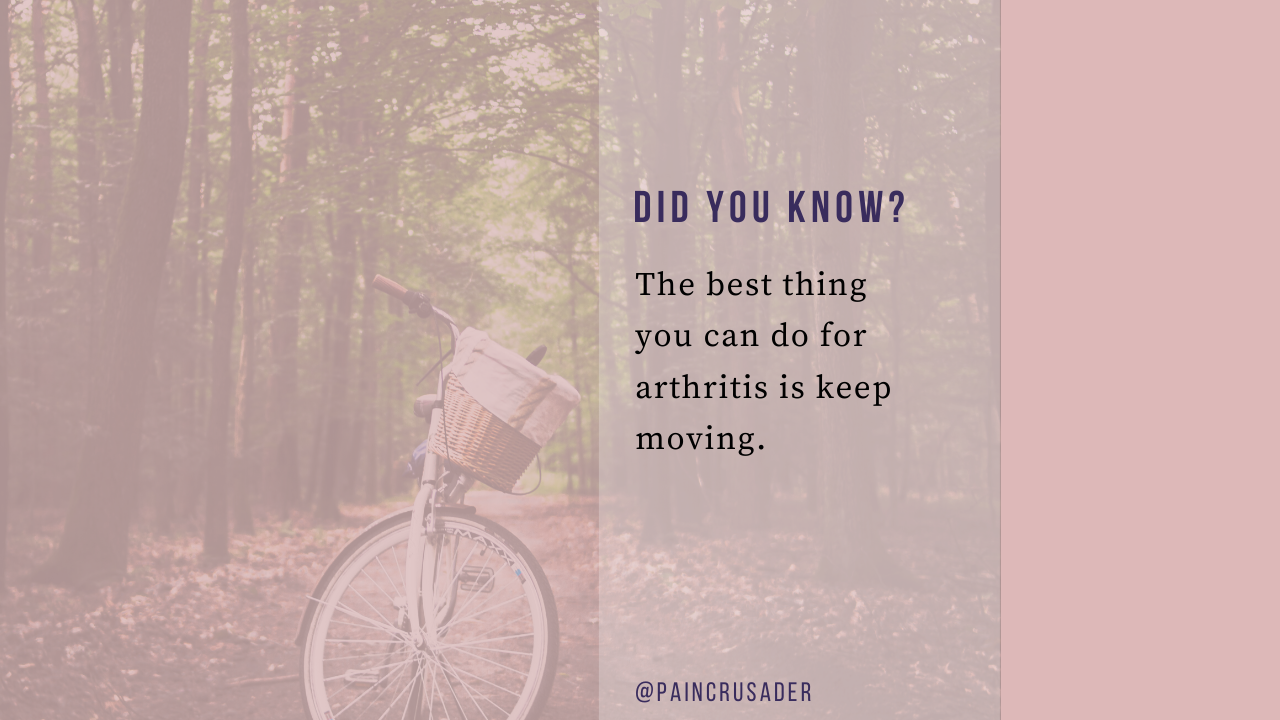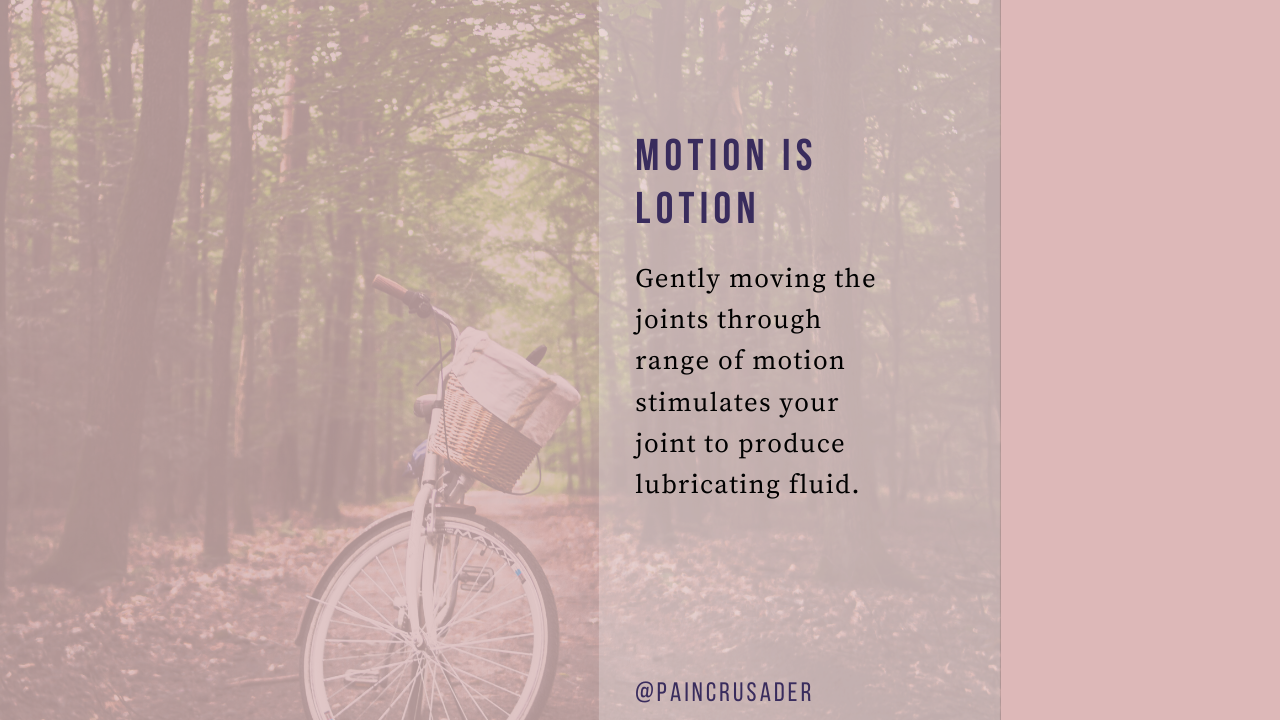5 Keys to Using Movement to Treat Joint Pain Effectively

There are many ways to manage joint pain like bracing, immobilization, injections, and joint supplements. But a lot of those remedies come at great cost, relief is temporary, and the research doesn't really show that they are all that effective.

The best thing you can do to treat joint pain, or arthritis, is totally free. Research study after research study points to movement as the number one best thing to relieve joint pain and prevent further aging of the joints.
Now, I know, you're tired of hearing that all you need to do is exercise and that will magically heal your pain. Yeah right!
I'm with you on this, I get it.
The reason you don't exercise is because it hurts to move. And too much movement means more pain.
What I want you to know is I hear you, and I get it.
But according to science, exercise is the best thing you can do for joint pain. After all, the science shows us that movement and exercise strengthens our joints, pumps blood and oxygen to our aching muscles and nerves, causes the release of pain-relieving endorphins, and stimulates production of our own body’s joint lubricating fluid. It all sounds so magical for those achy, stiff joints.
So, what do we do with that? Those science studies don't tell us how to get moving when movements hurt.
Exactly how do we harness the pain-relieving power of movement, without making things worse?
A common theme I see in my clients with chronic joint pain is they have the tendency to overdo it. They are the over-achievers and the go-getters of society.
There’s this mindset in our culture that reinforces the over-doing it behaviors. You can see it in the common mantras of our culture that we all have memorized: “move it or lose it”, “no pain no gain”, “pain is weakness leaving the body.”
That right there, my friends, is why many people fail physical therapy. There is this tendency to go all in. A mindset that says, “well if I’m gonna do it I might as well go all out”.
So, you give it your best shot, do your exercises while trying to ignore the pain, and then the next few days you end up feeling like you got hit by a bus. A few cycles of that and soon enough you’ll give up because the pain is too much to bear and you’re not seeing any relief.
Here’s what we need to recognize: When it comes to arthritis and joint pain, the over-doing it, no-pain-no-gain attitude has got to stop.
When I recommend movement to my clients for joint pain, there are a few things I make sure they understand. These are the three keys to using movement to treat joint pain effectively:
Key #1: Gently move the joints through the range of motion.
Movement for joint pain does not have to look like spending hours at the gym or running a 10K. For joint pain, I recommend fluid, safe, and healthy movements, that gently take your stiff joints through their available range of motion.
Key #2: Pay attention to what your body is telling you.
If you have chronic pain, you are probably an expert at ignoring the pain and the grin-and-bear-it coping strategy. Just because you can work through the pain, doesn’t mean you should. That pain is your body’s alarm going off, trying to get your attention, and the more you keep hitting the snooze button, ignoring the pain and pushing onward, the louder and louder the alarm will get. When you tune in, listen to your body, and respond appropriately, it has a calming effect on the nervous system and a quieting effect on those pain alarms. So, stop ignoring your pain and pushing past it. Which brings me to our next point…
Key #3: The movement should not hurt.
Once you’ve tuned in and are listening to (and loving) your body you can start with some of those gentle movements. As you move, I want you to walk right up to the edge of the metaphorical cliff but do not jump off. Get right to the edge of pain but do not go any further. Push to it, not through it.
Key #4: It doesn’t have to look perfect.
I always demonstrate exercises for my clients. Many times, my clients will say “oh well I can’t move as far as you do”. This shouldn’t come as a surprise, but I don’t expect you to. The over-achiever in you expects your body to perform your exercises with impeccable form and exceptional range of motion. The perfectionist in you bullies you into believing that if your movements are not precise it can be dangerous for your joints or that the movement will be less effective if its not perfect. Realize, that everyone moves differently. If there are parts of the movement that hurt, look for a modification. If there are movements where you can only move part of the way, then only move part of the way. If you start to feel pain after only 7 out of 10 reps, either back off or stop at 7 (yes, an odd number!). The art of movement is fluid and flexible, not precise, and rigid as our perfectionist minds would like to believe.
Key #5: Resist the urge to rest.
Another common mistake the over-doers make is they tend to ignore the pain for so long, keep hitting that snooze button on that pain alarm, and the alarm gets louder and louder until it shuts you down completely. Hello pain flare! On those days when you feel like you got hit by a bus the only thing you want to do is lay in bed with heating pads and pillows surrounding you like a cocoon. It’s those days when you need to resist the urge to avoid movement all together. Remember keys 1-4. Pick one or two gentle, safe, pain relieving movements and start slowly. Listen to your body. Push to it not through it. And give yourself some grace for not moving as well as you’d ideally like it to. Even one or two repetitions is fine.

In summary, exercise has healing power for joint pain if done with gentleness, grace, and listening to your inner self.
From one over-achiever to another, I encourage you to swap out the “no-pain-no-gain” attitude of the past with two new mantras: “push to it not through it” and “motion is lotion”.
If you’re anything like me, you need constant reminders to prevent over-doing it. My program, the Chronic Pain Breakup Method is designed by an over-doer for chronic over-doers.
Ready to take control of your pain and start feeling strong, confident, and renewed?
Get Pain Articles & Neuroscience Nuggets Sent To Your Inbox.
Subscribe to my Blog!






